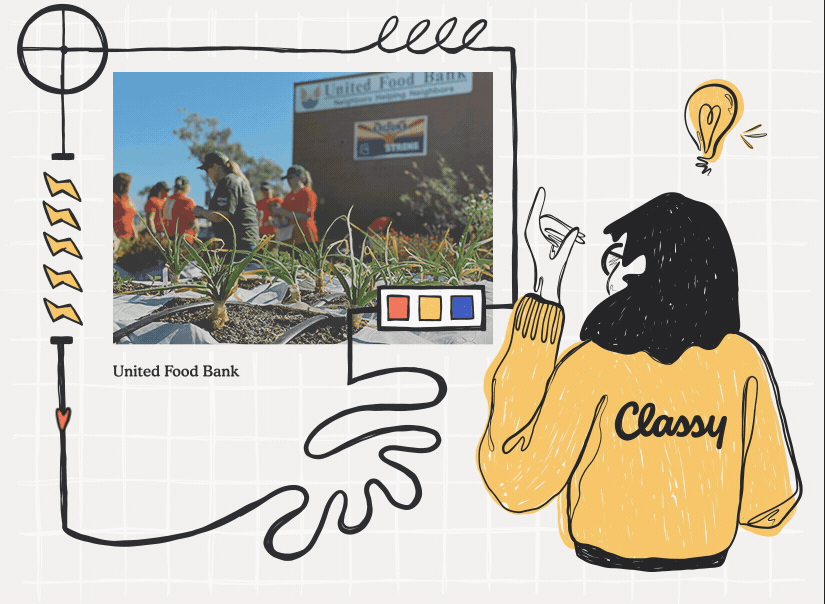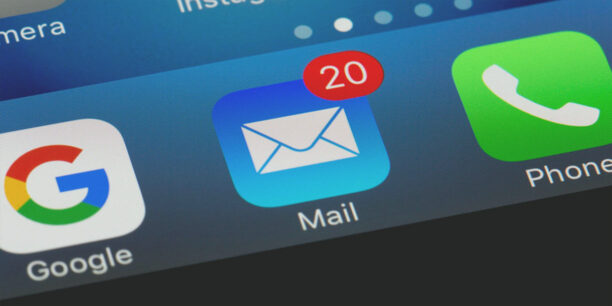3 Pitfalls of Nonprofit Newsletters and How to Avoid Them

Request a Demo
Learn how top nonprofits use Classy to power their fundraising.
The start of each new year is an opportunity to re-engage donors within your nonprofit. They’re likely already setting resolutions or goals for the next 365 days, including increasing their charitable giving.
Since the year-end is the peak of charitable giving, you likely acquired new donors during December. January is your chance to keep these donors engaged with your organization. In fact, Classy’s 2022 State of Modern Philanthropy Report shows that donors are 40% more likely to churn during January—meaning they’ll likely disconnect if you don’t take intentional action.
Remember these donors are likely fatigued from the giving request that came during the end of the year. The new year should be more focused on nurturing these donors over the long term rather than making direct asks immediately.
Email newsletters are a proven method for keeping donors engaged and maintaining brand awareness in their minds during the year. Use these tips to maximize your nonprofit newsletter’s effectiveness all year round.
1. Get the Right Message to the Right Audience
Don’t just send out an email newsletter to every donor on your list. Instead, divide your list into focused segments to send the right content to the right supporters.
Research shows that segmented emails see 14% higher open rates and 100% more clicks compared to generic email campaigns. The unsubscribe rates for these target emails are also 9% lower. That’s because you’re sending the right emails to the right people.
There are a few ways you can segment your list:
- By donation size
- By geographic location
- By how recently the donor gave
- By giving frequency
- By individual donor vs. corporate sponsor type
2. Keep Your List Clean
Effective nonprofit email marketing requires you to go beyond trying to build as big an email list as possible. To keep donors engaged, you’ll need to keep the right people on your list and allow the rest to self-remove.
Sure, you don’t want people to leave your email list, but you also don’t want to send emails to people who don’t want them. Allowing your audience to control their preferences and opt out of certain messages keeps your email list clean and your open rates healthy. You can also create a preference center to give users control over what they receive without losing them from your list altogether.
Make it easy for users to unsubscribe when they want. This is not only a requirement by law but also protects people from unwanted spam. Best practices also dictate that all reputable email service providers include unsubscribe links in the footer of emails and automatically unenroll users when they opt out.
3. Workshop Your Subject Lines
Your subject line determines if someone will open and read the email. With the nonprofit industry benchmark for email open rates approximately 20–25%, that means if you’re below that, you need to focus on improving your subject lines.
Too many nonprofits use default or generic subject lines (e.g., November 2022 Newsletter) that are uninspiring and easily skipped in a crowded inbox. Instead, craft a subject line that captures your donors’ interest and previews what they can expect from opening the email.
Here are a few tips for crafting a better email newsletter subject line:
- Vary the format rather than relying on a template.
- Focus on the one most interesting or valuable thing from the content.
- Pique your reader’s curiosity by asking a question or opening a story loop.
- Write 5–6 subject lines and get feedback to narrow down the best one.
- Use a subject line tester tool to workshop the words to get it just right.
- Try A/B testing your subject lines to see what gets a response from your audience (more about A/B testing later).
4. Provide Valuable Content
Nearly everyone (90% of users) has an email address, which also means nearly every other organization has to fight for space in people’s inboxes. If you want to retain subscribers and get them to read your emails, write valuable content tailored to your donors’ concerns.
Only your audience can tell you what they want, and this will vary depending on your nonprofit and the segment you’re emailing. However, some common charitable email newsletter sections often include:
- Mission or donor stories
- Volunteer opportunities
- Fundraising milestone updates
- Upcoming events
- Community news
Talk to a sample of your donors to learn what they’d like to see in a nonprofit newsletter. Next, test what sections people click on the most. Then, experiment with different content to see what’s effective. Your goal should be to provide them with value and give them a reason to stay involved with your organization.
User engagement is a reliable way to determine what content is meaningful for them. Be sure to include a few strategic calls to action (more on them in a minute) throughout the newsletter. Then, use clicks as a way to see what sections resonate most with your readers.
5. Make the Format Readable
The time people spend reading emails is increasing, though unfortunately, it’s still short—up to 11.1 seconds from 10.4 seconds (as of 2016). That’s barely enough time for donors to skim a medium-length email newsletter—so make the most of that time.
How you format the emails impacts the value donors get from your newsletters. Follow these tips to make each email readable and accessible for every supporter.
- Keep the format simple. Remove as many distractions as possible.
- Stick to one-column emails—especially since those perform best on mobile devices.
- Use visuals to highlight each section, but don’t overly depend on images, which can be slow to load (or not load at all in certain email service providers).
- Keep the text short—short sentences and short paragraphs. Write blurbs in the email that link back to the full content on your website.
- Don’t overdo it on colors and graphics. Consistent branding is crucial, but ensure that all text is easy to read on backgrounds and across devices.
6. Provide Calls to Action
Every nonprofit newsletter should include a few calls to action. These should connect directly to your content and ideally be a button (since those are easier to click than text links).
The fewer calls to action you include, the more likely a donor will click any of them. However, limit yourself to 2–3 in a single newsletter, or you’ll overwhelm the reader. Less is more.
These calls to action could be anything from:
- Donate today
- Sign up for monthly giving
- Attend this event
- Volunteer
- Follow us on social media
The benefit of an email is directly connecting the reader with your website or a digital action like donating or sharing on social media. Strategic calls to action help your organization take advantage of this opportunity.
7. Measure, Test, and Adjust
Sending an email newsletter is meaningless without measuring your success. Establish what data points you want to track and be consistent about evaluating them. Here are a few email newsletter metrics to consider:
- Open rate
- Click rate
- List growth
- Website traffic
- Conversions
Use A/B testing to gradually optimize your email format, timing, and content. This is a proven method for tweaking each element of your nonprofit’s newsletter based on how your donors respond. For each newsletter, you can pick one of the following to test:
- Send time and day
- Subject lines
- From email or name
- Email length
- Calls to action
Evaluate these metrics and test results with your team regularly. Then, use the findings to adjust and improve your email newsletter. This is the most effective way of ensuring what you’re sending is meaningful to donors.
Just like nonprofits always prepare for year-end giving, you should also be ready for the new year to retain new donors. An intentional retention and engagement strategy is the only way to continue to grow your organization and your mission.
Email newsletters present a unique opportunity to do just that. However, any nonprofit marketing email isn’t effective by accident. These require thought and considering your audience’s expectations.
Article Sources

The State of Modern Philanthropy 2022
Subscribe to the Classy Blog
Get the latest fundraising tips, trends, and ideas in your inbox.
Thank you for subscribing
You signed up for emails from Classy
Request a Demo
Learn how top nonprofits use Classy to power their fundraising.
 Explore Classy.org
Explore Classy.org 

